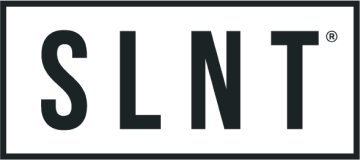Your Cart is Empty
Electrical Engineer
Mission
The mission of the Electrical Engineer is to design and execute a comprehensive plan for developing a metal Faraday cage prototype that provides EMP protection for fixed outdoor Department of Defense (DoD) equipment. As part of a Phase II SBIR project, this role is critical to transitioning early-stage research into a field-ready, test-validated prototype and system. The engineer will deliver a robust, MIL-STD-compliant solution capable of shielding vital DoD infrastructure against electromagnetic pulse (EMP) events, including high-altitude nuclear EMP (HEMP). The effort includes materials engineering, electromagnetic analysis, prototype development, and formal compliance testing, all aimed at delivering a viable pathway to Phase III commercialization or DoD deployment.
We are looking to work with candidates as individuals and firms. Location: SF Bay Area Preferred
Outcomes
Design phase - deliver advanced design concepts and a complete CAD model of a Faraday cage intended for rugged, fixed DoD installations. This includes translating the initial Phase I concepts into a mature, scalable design solution. Design requirements will align with MIL-STD-188-125 and related DoD use cases for EMP protection. Key metrics: conceptual design refinement completed by month 2; final detailed CAD package delivered.
Material and component specification - identify high-performance shielding materials and critical components such as EMI filters, RF gaskets, waveguides and shielded cable entries. Material selections must withstand environmental conditions while meeting electromagnetic shielding performance requirements. Key metric: finalized materials list and component specifications.
Modeling and simulation - lead electromagnetic modeling and simulation to quantify shielding effectiveness across relevant frequency bands (10 kHz to 1 GHz), validate grounding approaches, and assess potential field leakage paths. Simulation results will inform iterative design decisions to optimize attenuation (>60 dB target). Key metric: simulation and analysis report submitted.
Prototype - a partial-scale working prototype will be fabricated and assembled using the defined materials and methods through fabricators. Directly managing and working with SLNT team and subcontractors for a timely delivery and ready-to-test prototype. This prototype will be weather-hardened for outdoor fixed use and engineered to accommodate integration with existing fixed DoD outdoor equipment. Key metric: physical prototype completed and prepared for lab and field testing.
Testing - develop and execute a rigorous validation and compliance test plan in collaboration with third-party labs, including RS105 or equivalent pulse testing, shielding effectiveness tests, and mechanical durability validation. Results will be analyzed and used to inform any necessary design refinements. Key metric: compliance test results and post-test design update report delivered.
Technical documentation - developed in parallel with the engineering work and include final drawings, specifications, BOMs, test protocols, compliance checklists, and a complete design history file. This documentation must meet the expectations of DoD contracting officers and transition partners. Key metric: documentation package finalized.
Compliance and integration planning - ensure that the final design meets applicable DoD and regulatory standards and is compatible with existing infrastructure. This includes interface design for mounting, power ingress/egress, and data shielding. Key metric: final compliance and integration report completed.
Project planning, risk management, and budget tracking will be continuous throughout the contract. The engineer will maintain a living roadmap with milestone progress, technical risk logs, and cost status to support monthly SBIR reporting. Key metric: monthly project status updates and a final closeout report delivered.
Work within the guidelines of SLNT’s needs based on simplicity, costs and specs.
Competencies
Electromagnetic Compatibility (EMC) & EMP Protection – Must have deep expertise in EMP, HEMP, and RF shielding principles, with working knowledge of MIL-STD-188-125 and related DoD/IEC standards.
Faraday Cage & Enclosure Design – Proven experience designing enclosures in CAD for fixed, outdoor use, with understanding of grounding, shielding continuity, RF gaskets, and ruggedization.
Materials Selection – Strong background in selecting conductive and magnetic shielding materials (e.g., copper, aluminum, Mu-metal) while balancing cost, weight, and performance.
Electromagnetic Simulation – Proficiency in tools like CST Studio, Ansys HFSS, or COMSOL for modeling attenuation, leakage, and system performance.
Prototype Development – Experience managing prototype builds, sourcing materials, and coordinating with vendors to ensure build quality and functional integrity.
Testing & Compliance – Familiar with EMP/EMI testing standards such as RS105 and MIL-STD-461, with ability to develop test plans, work with labs, and apply results to improve design.
Technical Documentation – Skilled at producing drawings, specs, and compliance documentation suitable for DoD and SBIR requirements.
System Integration – Capable of designing for interface with DoD systems, including shielding for cabling, power, and mounting components.
Project Planning – Able to manage timelines, budgets, risks, and technical deliverables over a 16-month Phase II SBIR project. Experience with SBIR or similar government contracts is a plus.
Contract & Security Readiness – Eligible to work on DoD contracts with understanding of CUI, export controls, or ITAR. U.S. citizenship and clearance-ready status may be required.
Organizational Skills – Strong ability to prioritize, multitask, and meet project deadlines.
Cross-Department Communication – Clear communicator who can align technical development with multi-functional team needs.
Problem Solving – A fast learner who applies first-principles thinking to resolve technical challenges efficiently.
Data-Driven Mindset – Uses data to guide engineering decisions and align work with strategic objectives.
Team Collaboration – Positive, team-oriented contributor with strong communication skills and reliable energy.
Follow-Through – Excellent time management and consistent follow-up on tasks and project commitments.
Poise Under Pressure – Maintains professionalism and focus when facing high-stakes or time-sensitive challenges.
Contact info@slnt.com w/ cover letter and resume






